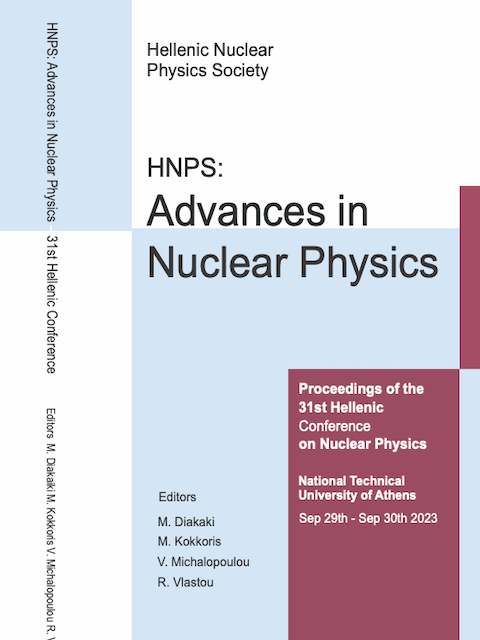Fast-timing measurements of nuclear lifetimes in the Z ~ 50 region

Abstract
The neutron–deficient region around the Z=50 major shell closure provides fertile grounds for nuclear structure studies, as single–particle degrees of freedom compete with collective phenomena to form several of the observed spectroscopic properties. This work reports on the progress and the preliminary results of a recent experiment performed at IFIN–HH, in Magurele, Romania, focused around the measurement of lifetimes of excited states in neutron–deficient Te isotopes, by means of the Fast Electronic Scintillation Timing (FEST, or fast–timing) technique. A 11B beam of Elab = 35 MeV impinging on a 5 mg/cm2 natAg target was used to populate excited states in 115−120Te. The γ rays de-exciting these levels were detected by the ROSPHERE array, in its mixed 15 HPGe + 10 LaBr3(Ce) detector configuration. Additionally, the SORCERER particle detector array was coupled to ROSPHERE, enabling the study of p-γ and p-γ-γ coincident events. The combination of experimental findings and theoretical predictions from several models, including the newly developed proxy-SU(3), is anticipated to offer valuable insights into the dynamic shape evolution of the investigated isotopes.
Article Details
- How to Cite
-
Vasileiou, P., Mertzimekis, T. J., Zyriliou, A., Chalil, A., Efstathiou, M., Karadimas, A., Koseoglou, P., Bonatsos, D., Martinou, A., Peroulis, S. K., Minkov, N., Mărginean, N., Mihai, C., Costache, C., Lică, R., Mihai, R. E., Borcea, R., Turturica, A., & Florea, N. (2024). Fast-timing measurements of nuclear lifetimes in the Z ~ 50 region. HNPS Advances in Nuclear Physics, 30, 55–58. https://doi.org/10.12681/hnpsanp.6309
- Issue
- Vol. 30 (2024): HNPS2023
- Section
- Oral contributions

This work is licensed under a Creative Commons Attribution-NonCommercial-NoDerivatives 4.0 International License.





